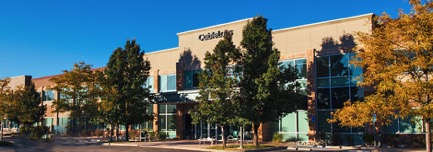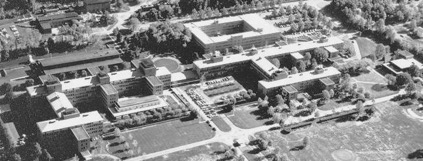US & Japanese Broadcasters Both Try to Keep Their "Fingers in the Dike"
On Saturday the following tweet appeared from NAB Labs - “an initiative of the National Association of Broadcasters (NAB) to foster innovation and propel broadcast television and radio into the future.”

One immediate question is what really is NAB Labs? Earlier this year we speculated that “NAB Labs might appear possibly promising, but is most likely just a PR effort from a PR-focused trade association wanting the appearance of a counterpart to CableLabs.” Is NAL Labs an “initiative” or is it a technical facility? First we see that the address is the same as the NAB headquarters - near the former FCC location. Not exactly a technical hotbed area, although I miss all those nice restaurants. How big is NAB Labs? No budget information can be found. Their site gives 10 names, but policy wonk readers will recognize that several have NAB policy positions and are not primarily involved in R&D or testing.

By comparison, the similarly named CableLabs near Boulder CO has 175 employees in the building shown above. While it is unclear what the total size of the building is, it includes “over 12,000 square feet of lab space to suppliers and members who wish to use this development area.”
To give another example of how an industry develops a lab to support its members, consider the Electric Power Research Institute (EPRI), located in Palo Alto, CA - also more conducive to R&D than the Dupont Circle area. EPRI has 700 employees and an annual budget of nearly $400M. An inspection of their main office on Google Maps shows a complex with 8 buildings. So it would appear that both the CATV industry and electric power industry has “brick and mortar” labs, whereas “NAB Labs” is of a different genre.
But back to the original NAB Lab tweet. It dealt with the long standing FM in cellphone issue that has been a recurring topic here. This started as an attempt by NAB in 2009 to solve a totally unrelated copyright issue by agreeing with MusicFirst, a copyright holders group, to a package of terms that included joint lobbying for legislation to require FM receivers in all cellphones. While there has been no public discussion of such a legislative requirement recently, the new NAB Labs tweets signals something is warming up. The tweet has a link to a NAB Labs page entitled “FM Radio in Smartphones”.
NAB Labs has discovered data that
“indicates that essentially all of the 90 million smartphones sold in the U.S. during that period (2013) were equipped with an FM radio tuner, yet FM reception was activated for users in only about 4 percent of those phones. About 18 million of those phones (20 percent of the top sellers) have fully operative FM radios in their versions sold outside the U.S., indicating that FM reception could be easily activated by carriers in the U.S. versions, likely without changing the smartphone hardware.
Why does it matter? Americans are consuming more audio and video on the go than ever before. Smartphones and tablets have turned into walking entertainment centers. But the convenience of on-the-go entertainment can carry a hefty price tag as wireless companies charge by the bit. With FM radio capability, a mobile device user doesn't have to stream audio, but receives it over the air for free – with less battery drain on the device. And during crisis situations when cellular networks can go down, over-the-air radio stays on.”
Now if NAB is right, why doesn’t the marketplace work here? CTIA argues below that its does:
This continuing attempt by NAB to counteract marketplace forces sounded analogous to action by their Japanese counterparts a year ago. When faced with a new TV model with Internet capabilities that were threatening to their industry model. An English language peer in Japan reported
Panasonic says Japanese TV stations are refusing to air commercials for its new “smart” television, apparently because they feel threatened by its combined TV-Internet function.
Private broadcasters, in a rare case of turning down a major advertiser, have said they will not show commercials for the product, claiming the split screen simultaneously showing broadcast content and Web pages may confuse viewers, according to reports.
So it looks like Japanese broadcasters are also trying to put their finger in the dike to slow marketplace and new technology forces.
Bell Labs Today:
The State of US Telecom Industry R&D

Bell Labs’ Murray Hill, NJ headquarters circa 1970 in the “golden age”
iTnews, an Australian newsletter, published a recent interview with Alcatel-Lucent CTO Marcus Weldon, “the product executive now charged with also running the famed Bell Labs”. They report that he “is perplexed as to why he was chosen to manage an organisation with a heritage in fundamental research.” As mentioned here earlier, your blogger is sentimental about his work at Bell Labs early in his career.
Weldon is quoted as saying “I'm incredibly optimistic that this is the next great era of Bell Labs. It's a little bit arrogant to state that, but on the other hand I wouldn't have taken the job if I didn't believe it were true."
The interview reveals that there are now just 700 people working at Bell Labs. By contrast, prior to 2001, Bell Labs had 11,000 employees at Chicago area locations alone! At the beginning of its existence, Bell Labs employed 4,000 individuals. In 1978, there were reportedly about 25,000 employees. Another source says the “between 1925 and 1981 the number of employees ... had grown from a little over 3,000 to 24,078.” Further that number included 3,328 with doctorates. Indeed, the Murray Hill headquarters was the center of the Bell Labs’ Research organization (as opposed to development or systems engineering which were larger and in other locations) and Research alone had 2,800 employees.
In the late AT&T monopoly era prior to Divestiture, Bell Labs was funded out from the “gross national phone bill”. I recall, but can’t find documentation for, that the pure research part of Bell Labs received something in the range of 0.5 - 1% of the gross national phone bill while the development of specific hardware and software was paid separately by the former Western Electric, the captive supplier and first choice vendor to the BOCs.
Now a great part of the size reduction of Bell Labs was because of industry restructuring and was inevitable. Much of the old Bell Labs staff was involved in development of specific new products that were then manufactured by Western Electric. In Alcatel-Lucent, divisions of A-L do their own development of products. But I have to admit that I was shocked that it is down to 700 employees. The old Nortel had a small Bell Labs-like organization and that is all gone now. But how much US-based, or even North American, industry-funded telecom research is going on now? Qualcomm clearly has a big research operation, but does anyone else?

Last summer AT&T announced that it was “opening research centers in Atlanta and Plano, Texas, part of an attempt to shed its stodgy Ma Bell image by innovating in such areas as home security, inventory tracking and in-car online services.” Further “the company also has research centers, known as foundries, in Israel and Palo Alto, California. There are 71 employees working at the foundries now, and AT&T expects that total to reach 92 by year-end. “ 92 employees - wow! Can AT&T (2012 revenue = $127.434 billion) really afford it?
An AT&T Research employee contacted me about a year ago and announced he was leaving because
“Sadly the greater leadership in AT&T have decided that internal research activities focused on physical layer technologies (current or future), is no longer in the interests of AT&T's going forward. Based on recent Lab wide meetings, the new leadership made it very clear that phy layer activities are now going to be deemphasized and the Research focus going froward will be big data, cloud and network software focused… Network technology will now likely be handed over to our vendors for development and innovations - At this recent meeting I challenged how these vendors will know what to build and plan for going forward, and aren't conferences and standards activities a very important part of that idea exchange. I was told that only standards meetings that have a direct bearing on current network activities will be supported by "AT&T representatives" and that Research shouldn't be focused on such near term actives - naturally I protested this position but it fell on "deaf ears". Worse even university and broader collaborations will be directed at network software not hardware.”
CableLabs is an example of an industry-funded R&D organization but has only “approximately 160 employees and an on-site population of visiting engineers and consultants.” Industries like the cellular industry could fund a R&D facility like CableLabs or the electric power industry’s Electric Power Research Institute, but seem to be more interested in lobbying for near term gain. (The broadcast industry’s NAB Labs might appear possibly promising, but is most likely just a PR effort from a PR-focused trade association wanting the appearance of a counterpart to CableLabs. An interview with the NAB’s CTO indicates that the main focus is testing the technology developed by others.)
To maintain US competitiveness in telecom technology, not to mention avoiding the national security implications of being totally dependent on offshore companies for all telecom infrastructure, isn’t a greater US-based R&D effort needed? Why not the EPRI model?




![Validate my RSS feed [Valid RSS]](valid-rss-rogers.png)

